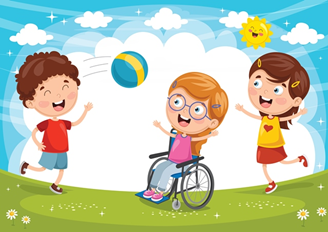
Parents need to understand just how important time at the playground is for the development of children. There is a significant difference between the structured play of recess and the spontaneous play on a playground on a Saturday afternoon. Recess is excellent for getting children used to being part of structure but also being able to exert their creativity at the same time. But when the conditions of play are random and unexpected, then the child will experience advances in play that would not occur otherwise. Child development on a playground touches on all of the areas that children need to grow up with optimal motor skills and a fertile imagination. There is much more to a playground than some monkey bars and swings. The playground represents one of the more important parts of a child's early development.
From a physical standpoint, spontaneous play on a playground with new and different children can significantly enhance the development of a child's motor skills. A child's sense of coordination develops more quickly when that child is playing on a playground and not knowing what the next activity will be. Children tend to be more adventurous on a playground, which means that they will force themselves to be able to do the kinds of things they want to do to have fun. Not only is playing outdoors great for a child because of the fresh air and sunshine, but it also encourages the child to work harder to develop their coordination and motor skills. On a playground, children are working hard to improve their physical development and they don't even realize it.
Children learn valuable, and sometimes hard, lessons when playing on a playground. A child's ability to think quickly is significantly developed when the child has no idea what is coming next. In a playground environment, children learn to develop their social skills and figure out how to introduce themselves to new people. A playground teaches a child how to approach other children, and it also teaches children about the boundaries that other people have. The playground environment also teaches children about the hard lesson of trust. Children learn quickly that not everyone is as trustworthy as their parents, and it becomes the necessary foundation for establishing interpersonal relationships for the rest of their lives.
One of the benefits of the playground that may not be immediately evident is the development of communication skills that children experience. The playground is a place where children must learn verbal and non-verbal communication to be able to participate in play. The playground often consists of children of varying ages, which means that some of the older children will have more advanced communication skills that the younger ones. For the younger children to be able to benefit from the activities that take place on the playground, they must learn to communicate at many different levels. While the benefits of this enhanced development are not immediately seen, they can become evident over time when the child grows and has to deal with a wide variety of people in a work environment.
Research shows that kids today lead more scheduled and structured lives than ever before, and they spend much less time outdoors than older generations did when they were kids. According to one British study, on average, children play outside for just over four hours per week these days, compared to more than eight hours per week that their parents' generation spent outdoors.
Parents eager to break from routine and get their kids outside might head to their nearest playground for an afternoon. But most neighbourhood playgrounds offer structured environments that circumscribe play opportunities and leave little space for developing kids to exercise their imaginations.
"With traditional play structures, there is a sense of monotony that decreases the yearning to try innovative things," explains Leela Magavi, M.D., a board-certified child and adolescent psychiatrist.
Fortunately, there's a growing trend in playground design to eliminate over-programmed playgrounds in favour of more natural ones. Natural playgrounds are often designed to honour local landscapes: a slide might be installed on an existing slope, while boulders and stumps are re-engineered as safe play features. When natural playgrounds include play structures, they tend to be abstract. Some still host traditional favourites like swings, but kids will also find new things to love, like climbing walls, log jams, and movable materials like dirt, sand, and water. All these are pluses for developing kids.
